-
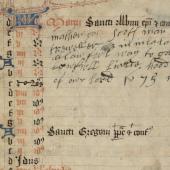
Memoranda in a missal
-
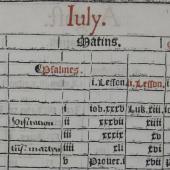
Common prayer: change, revision, and adaptation
-

Common prayer: the time of the living
-
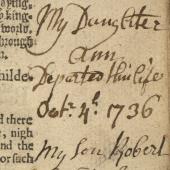
Common prayer: a catalogue of mortality
-
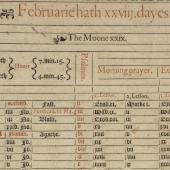
Historical time in the liturgical calendar
-

Calendar and chronology : almanac timetables
-
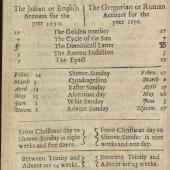
Gauging historical time in multiple measures
-
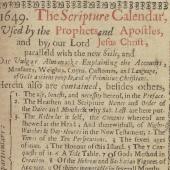
Radical calendars: the almanac in biblical terms
-
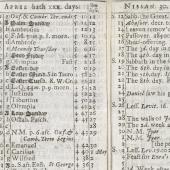
A Jewish almanac
-
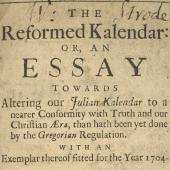
A polemic on the reform of the Julian calendar
Calendars
Remembering the Reformation
The objects collected under this heading illustrate the temporal organisation of everyday life in sacred and (ostensibly) secular calendars, prayerbooks and almanacs. The rhythm of the liturgical calendar that had governed everyday life for centuries hardly diminished with the Reformation, but its adaptation in England by the Book of Common Prayer disseminated the liturgy in the vernacular for the first time. Common prayer came of necessity with a common calendar, adapted from the familiar format of the Catholic primer, which then became a repository of private and collective memory.
Several scales of time move through the Book of Common Prayer: the liturgical calendar, outlined diagrammatically in the opening pages; the progress of a human life-time abstracted in the orders for baptism, marriage, and death; and saturating the whole, the anticipatory future of ‘the life of the world to come’. To these, readers add their own temporal dimensions, annotating their prayerbooks with collective and personal histories, populating their calendars with dates of interest and inscribing family histories in the margins of the liturgy.
Meanwhile, ostensibly secular modes of organising time likewise depend on the structure of the liturgical year and the grand scheme of salvation history, as almanacs collate church time with the other yearly rhythms of social life, from law terms to the dates of fairs, and collect major events into timelines that offer history in miniature.
These instruments of managing time on a yearly and a historical scale are always involved in the business of memorialising, from the liturgical rhythm that yearly replays gospel histories and the lives of the saints to the organisation of history performed by almanacs. At the same time, the cognitive work of memory is always in play in readers’ attitudes toward these materials, as the mechanism through which time is embedded in daily experience.